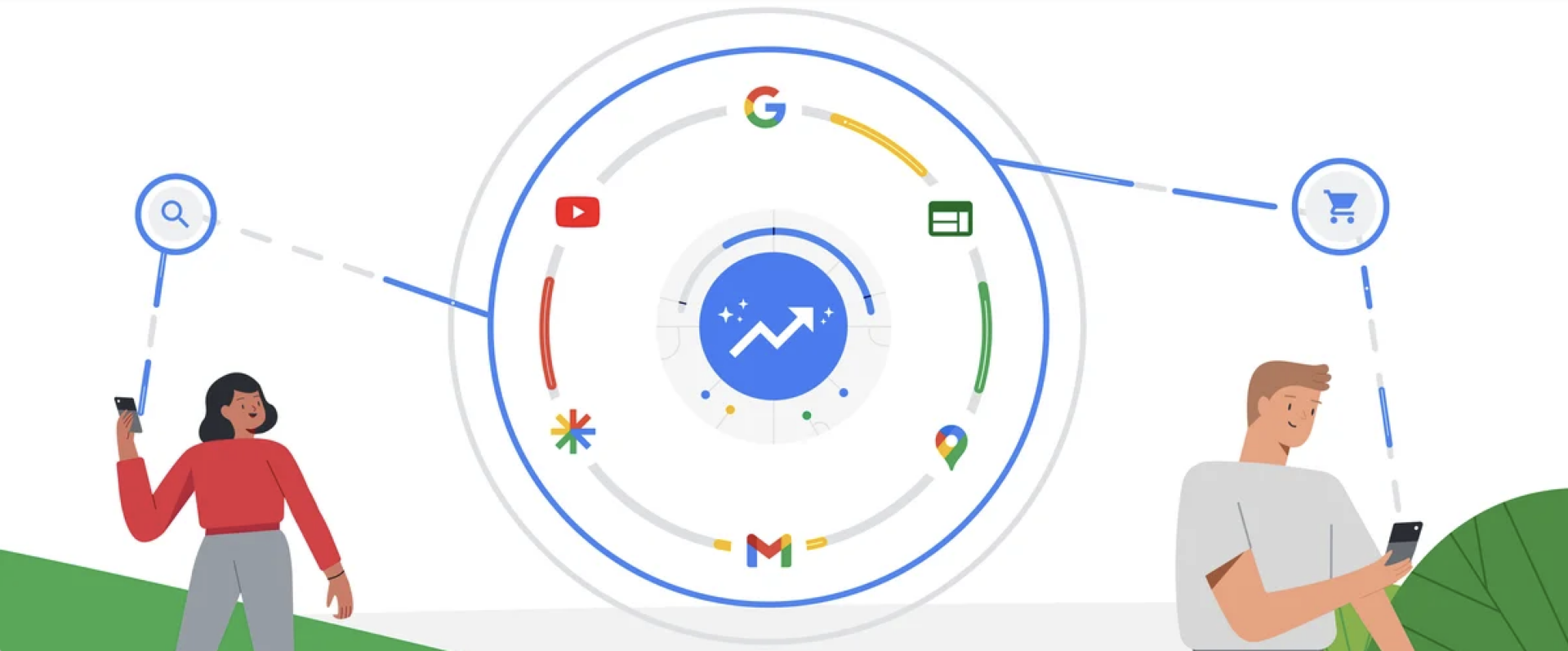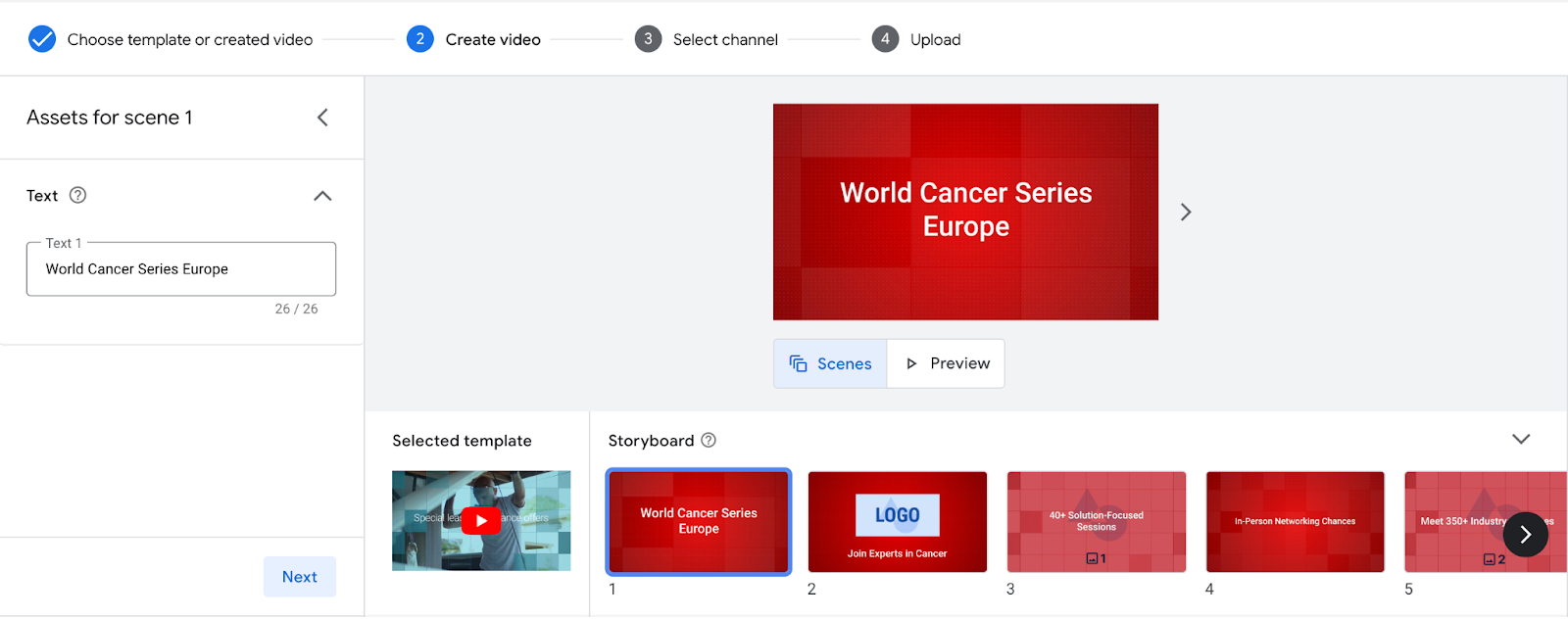Performance Max: Then & Now
Written by: Lee MacNicol, Paid Media Manager
Performance Max campaigns (known as PMax) have come a long way since their introduction as a somewhat limited e-commerce tool.
Back in the early days, advertisers were left with a sense of “set it and forget it,” with little control and transparency.
Today, Performance Max offers a robust and dynamic experience that caters to a wider range of industries and gives advertisers more power to optimise their campaigns.
What is Performance Max?
Performance Max is Google’s all in one PPC solution and is defined by Google as:
“A goal-based campaign type that allows performance advertisers to access all of their Google Ads inventory from a single campaign.
This means that one PMax campaign encompasses Search, Display, YouTube, Gmail and more.
The campaign was rolled out in 2022 and, in the early stages, it was met with mixed reviews.
Some loved the concept of having all campaign types in one place and were thrilled with the simplicity and the ability to easily manage all their campaigns in one place.
Others however, were a bit more sceptical and refused to accept the lack of control and reporting associated with PMax.
Over the last 2 years, Google has continually updated and improved their PMax offering and will no doubt continue to do so in the future. Let’s now take a look back at the old days of PMax versus the modern era of PMax…

Then: Limited visibility and control
Originally launched as an extension of Shopping campaigns, PMax initially had a strong focus on e-commerce.
Advertisers had limited visibility into how their budget was being spent across Google’s vast network.
There was no control over ad placements, meaning you couldn’t exclude unwanted websites or use negative keywords to refine targeting.
One of the biggest criticisms of Performance Max was that advertisers were unable to see any insights into their audiences and who Google was deciding to target with the ads.
Now: A more powerful and flexible tool
PMax has evolved into a powerful campaign type suitable for businesses across all industries.
It now integrates seamlessly with Search Network campaigns, allowing you to leverage search themes for targeting alongside other signals.
Performance Max now offers asset group insights, giving you a better understanding of which headlines, descriptions, and visuals resonate most with your audience.
It is worth noting however that, unlike other campaign types, Performance Max does not specifically target your audiences or keyword themes.
Instead, it uses the data you input and the machine learning will use that data with historical data within the platform to reach users based on your input.
The level of control has also seen significant improvements.
You can now leverage account-level negative keywords to exclude irrelevant audiences, and even implement brand exclusions to prevent your ads from appearing alongside competitors or irrelevant terms.
This is particularly useful when it comes to marketing structure. For example, with Performance Max advisors are now able to separate out terms such as Brand vs Non-Brand or New vs Returning adueicnes.
Additionally, the ability to run experiments within Performance Max allows for A/B testing of different strategies, helping you optimise for maximum impact.
Then: Auto generated vide-no
While it is possible to run Performance Max campaigns without Video assets, Performance Max does require videos to run the campaign. Don’t panic if you do not have video content; Google will make that for you!
This was Google’s way of reaching the advertisers who previously only had the capabilities to run Search & Display campaigns and initially this would’ve been an exciting time for those advertisers.
With the rise of short form content (TikTok, Instagram Reels & YouTube Shorts) dominating the digital marketing space, it’s more important than ever to tailor content towards more short form videos.
It is even reported that the human attention span is in decline and some sources even suggest that this has dropped from 150 seconds to 45 seconds in the past 2 decades.
It was quickly discovered, however, that the auto generated video ads simply took some ad copy and some image assets and popped them into a 30 second video (regardless of their relevance to each other).
If that’s not scary enough, they also added in a cheesy “feel good” jingle (again regardless of its relevance to the ad). Therefore the ads did not always align perfectly with brand messaging.
Now: AI assistance for enhanced creativity
Performance Max takes advantage of cutting-edge technology to streamline the ad creation process.
It now offers a video creation tool that empowers you to create high-quality video ads using your existing assets.
Additionally, Google’s generative AI can assist with crafting compelling ad copy, ensuring your message resonates with potential customers.
The tool allows you to use pre-made Google video templates to create high quality videos. All that Google requires from you is images, a logo and text.
The quantity of creatives required depends on the template you use however it is generally 2-10 images, 1 logo and 2-6 text areas.

Google will then put all of the creatives into a pre-built video and you can edit where and how you want the assets to appear.
The auto generated content still requires some work and can still be a little rough around the edges but it is a sign of things to come and it won’t be long before this feature is nailed down by Google.
The future of Performance Max
While it is improving in offering insights and control, future iterations could allow for even more granular targeting by demographics, interests, and buyer journey stages. Imagine being able to set specific campaign goals for different audience segments within PMax.
Additionally, reporting could become even more detailed, allowing advertisers to see exactly how their creatives perform on different platforms within the campaign.
It currently uses a data-driven attribution model. In the future, Google might offer more advanced attribution options within Performance Max campaigns.
This could allow advertisers to see the full impact of the campaign across different touch points, giving them a clearer picture of how this campaign type contributes to conversions alongside other marketing efforts.
Conclusion
Performance Max campaigns have undergone a significant transformation.
From its initial, e-commerce-focused limitations, it has become a powerful and flexible tool for advertisers across industries.
With increased insights, more control over targeting and placements, and the assistance of AI, Performance Max allows you to reach the right audience with the right message at the right time.








